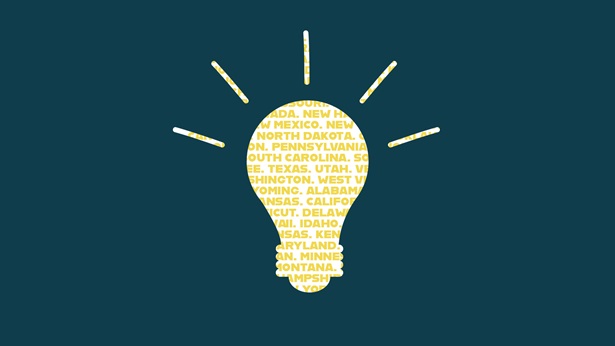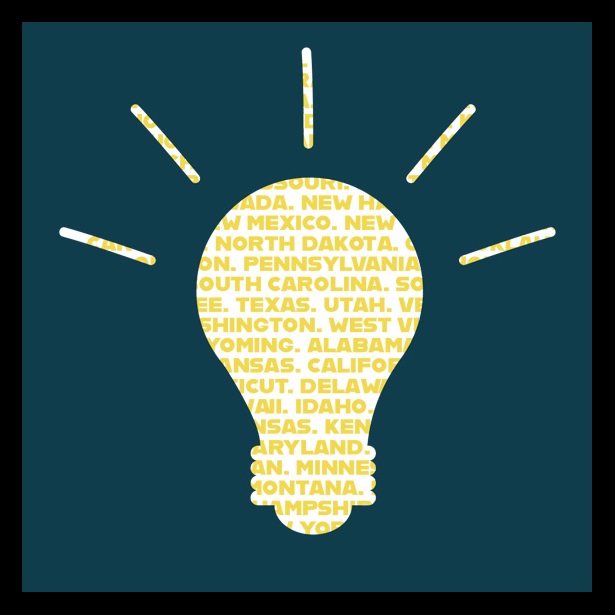Did That Drone Just Tell Us to Stay 6 Feet Apart?
Stateline

The plan for a pandemic drone didn’t last long in Westport, Connecticut.
Within days in late April, the police department of the coastal town outside New York City reversed course on using drone-mounted cameras to scan crowds for fevers and coughs.
The department had said it would use the technology at beaches, train stations, recreation areas, and shopping centers. Biometric readings would help the department understand population patterns and respond to potential health threats.
Feedback from some of the town’s 28,000 residents was quick and laden with concern, Lt. Anthony Prezioso said, so the department canned the program.
“This is not really a time to divide people,” Prezioso said. “If this was an issue that would create more angst and division among our community, it wasn’t the time.”
At least 40 law enforcement agencies across the country have used drones in the past few months for coronavirus-related purposes, according to a Stateline review of police websites and news reports. Law enforcement drones have hovered over a homeless encampment to invite people to get a free health assessment, flown over parks to check for social distancing, and broadcast messages asking crowds to disperse.
But as in Westport, drones raise the question of what surveillance the public will accept in a tense time. The new measures—monitoring social distance, scanning crowds, testing temperatures—also worry civil liberties advocates and some in the drone industry.
“This is not a time to be, in my opinion, ramrodding the aircraft into the air,” said Matt Dunlevy, who owns SkySkopes, a Grand Forks, North Dakota-based drone company.
SkySkopes is testing how drones can be used to deliver supplies or spray disinfectant across areas such as playgrounds, gyms, and stadiums. It is also doing limited indoor testing with a thermal imaging camera.
“I think that this is a time to take particular care as to how drones are used,” Dunlevy said. “I would personally encourage all drone operators to make sure that they take the utmost care and operate with the utmost sensitivity.”
A Versatile Tool
Roughly 1,100 law enforcement agencies have acquired drones over the past few years, according to research by the Center for the Study of the Drone at Bard College in New York. Agencies tout their uses for evaluating crime scenes and searching for missing persons.
The Federal Aviation Administration requires drone pilots to be certified and keep drones in sight and not above people, with some exceptions. As long as its rules are followed, the agency doesn’t regulate how a drone is used.
“I think it’s so cool that all these agencies are doing stuff,” said Ian Gregor, a spokesperson for the FAA. “We wrote the authorizations and regulations broadly. When we wrote them, we had no idea we’d be seeing this kind of public health agency use.”
Since 2013, at least 44 states have enacted laws addressing drones, according to the National Conference of State Legislatures. For example, some states bar flights over correctional facilities.
At least 18 states require law enforcement agencies to get a search warrant to use a drone for surveillance or to conduct a search, the group said. But those laws leave room for uses such as crowd surveillance and broadcasting social distancing messages, experts said.
“Either of those use cases don’t violate the Fourth Amendment because people in public places don’t have a reasonable expectation of privacy,” said Gregory S. McNeal, a professor of law and public policy at Pepperdine University in California.
“The other bigger question is whether we as a society want drones flying around as the enforcers of these bureaucratic rules, whether by blaring these commands by speaker or by other means,” McNeal said. “That’s less of a legal question and more of a social acceptance question.”
Robot Government
Civil liberties advocates worry that the pandemic will push law enforcement agencies to go to extreme lengths to adopt fast-moving technology.
“In a rush to do something, we need to be very cognizant that hastily implemented systems could pose unnecessary and significant risks to privacy, civil rights, and civil liberties,” said Kara Gross, legislative director and senior policy counsel for the American Civil Liberties Union of Florida.
Gross pointed to similar civil liberties discussions amid expanded government surveillance after 9/11. “In times of crisis, we are seeing our country relax protections for individuals,” she said.
“Do we really want to live in a state where we have this ever-present eye in the sky that’s collecting information about individuals, about their private, personal health?” Gross said.
Matthew Guariglia, a policy analyst with Electronic Frontier Foundation, a nonprofit digital rights group based in San Francisco, said he was skeptical of the accuracy of thermal imaging cameras and questioned their use by law enforcement rather than public health officials. But even sending a drone with loudspeakers toward a crowd gave him pause.
“It normalizes policing and governance by robot,” he said.
And, he warned, even if a technology is adopted under the guise of short-term use, it’s less likely to be removed after the crisis.
“It might be for policing social distancing now, but in seven or eight months it might be sending that drone over protests against a presidential election,” Guariglia said.
Mixed Reactions
The CEO of the company behind the Westport drone program, while commending the department’s decision to back out, said he thinks other police departments will give it a try.
“They did the right thing by being transparent about it and providing the community a chance to voice their concern,” said Cameron Chell, CEO of Draganfly. The Saskatchewan, Canada-based company with offices in Los Angeles and Raleigh, North Carolina, has been working with public safety agencies for about 15 years.
The thermal imaging software was developed in partnership with the University of South Australia and Australia’s defense department, he said. It can detect body temperatures, respiratory rates, and heart rates from 190 feet away. The cameras don’t have facial recognition abilities, he said.
“It could provide us real-world information instead of guesses,” Chell said.
Chell said he’s working with both law enforcement agencies and private industry groups to start more pilot programs. He declined to name any of the groups.
Police in another Connecticut town, Meriden, started a drone program a few months ago with plans to use it to investigate crash scenes and search for missing people. Instead, police have used it to hover over two large parks and see whether residents are social distancing.
“In one snapshot, you can see areas of concern,” said Sgt. Jeff Herget. On the first Sunday in May—a warm spring day—the parks were full of families walking and hiking, he said.
Using a speaker on the drone, the police played four or five announcements over about six hours reminding groups to keep a safe distance apart.
Reactions were mixed. Many people at the park responded positively and wanted to see how the drone worked, Herget said, but online commenters were less supportive.
Of ways to use the drones, he said, “I don’t think any of us thought we’d be doing social distancing.”
Lindsey Van Ness is a staff writer for Stateline.
This article was previously published on pewtrusts.org and appears in this issue of Trust Magazine.









